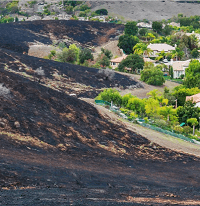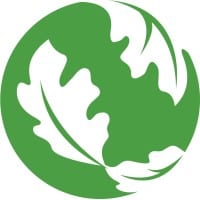Fire Communication & Education
Workshop registration.
Join the Sagebrush Technical Transfer Network for a workshop to build technical transfer skills for scientists. Do you want to learn how to work with land managers to put science to use? Are you interested in skills oriented towards scientists for bridging science and practice? Join us for this 3-hour interactive workshop to get started using the Technical Transfer Framework in your work.
Access the training.
With this training we have the opportunity to learn about Native History in the US, and the resulting trust responsibility of the federal government as a byproduct of colonization. The training then dives into Tribes present day, where sovereignty and self-determination are explored and the third module leads us into culture and identities of Indigenous Peoples across what is now known as the US, with a learning objective to “offend Natives 50% less of the time AND engage with tribes 25% more effectively!” Training background and content summary from the Nature Conservancy.
Access online training modules.
Learn how ESCAPE (WUI Fire Evacuation and Sheltering Considerations — Assessment, Planning, and Execution) provides crucial guidance for wildfire evacuation planning, enhancing life safety for civilians and first responders.
View webinar recording (1:00:02).
Community Wildfire Protection Plans (CWPPs) are collaboratively developed by local, state, federal and tribal partners. CWPPs focus on reducing wildfire risk to people, homes, businesses, watersheds, cultural resources, infrastructure, natural ecosystems, and other values or resources within a defined planning area. The California CWPP Toolkit provides important guidance and resources for communities to develop and implement these plans across the State.
View video (6:21)
The Fire Science Exchange Network, part of the Joint Fire Science Program, connects wildland fire research with the people who need it most—land managers, firefighters, practitioners, and communities. Through regional exchanges, they deliver science you can use to make informed wildland fire and land management decisions.
Visit website.
Technical transfer requires significant time, skills, and expertise, which are rarely explicitly taught or supported. Thus, many people engage in technical transfer with limited capacity or resources. Led by the Institute for Natural Resources and the Intermountain West Joint Venture, the Sagebrush Technical Transfer Network seeks to equip those who support others in using technical information with resources, training, and a professional network to support and strengthen their technical transfer work.
Webinar registration.
Are you planning for smoke preparedness and mitigation in your community and looking to embed that work into your Community Wildfire Protection Plan? Join our discussion and talk with experts about tips and resources for integrating smoke considerations into your CWPPs.
Webinar registration.
Are you thinking about integrating your Community Wildfire Protection Plan update with an All-Hazards Mitigation plan or other local plans? Join our discussion and talk with experts about tips and resources for how to crosswalk these plans effectively. This is the first of a three-part series that will provide a deep dive into developing the next generation of CWPPs.
More information and registration.
Explore the Role of Ranchers in Fire Ecology and Land Management
While most wildfire research in the western U.S. focuses on public lands (e.g., Forest Service, BLM, Park Service), private ranches—especially across the Southern Rockies—play a crucial role in managing biodiversity, supporting rural livelihoods, and mitigating wildfire risk. Ranchers are increasingly engaging in land stewardship and collaborative research to build resilience against extreme wildfires.
About the Western Ranch Management and Ecosystem Stewardship Program (WRMES)
WRMES promotes sustainable ranching practices that support forests, rangelands, wildlife, water resources, and
rural communities in the Intermountain West by providing classes, research, outreach, and a masters degree.
Highlights (4 Weeks):
• Visit 8–10 working ranches representing diverse ecosystems and management approaches.
• Learn strategies directly from ranchers creating both ecological and economic sustainability
Training details and registration.
In this streamlined class, you’ll learn how to guide a focused and actionable Community Wildfire Protection Plan process that delivers results. You’ll learn to:
- Map out each stage of CWPP development
- Assess local wildfire risks using trusted tools
- Engage your community and prioritize treatments
- Build and implement a results-driven action plan
Training will be JUNE 9 – 10
8 A.M. – 5 P.M. Redmond Fire and Rescue
341 NW Dogwood Ave. Redmond, Oregon







